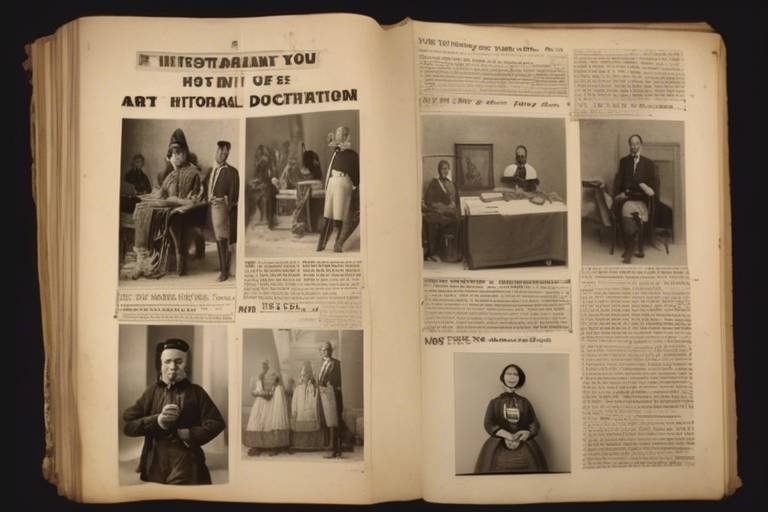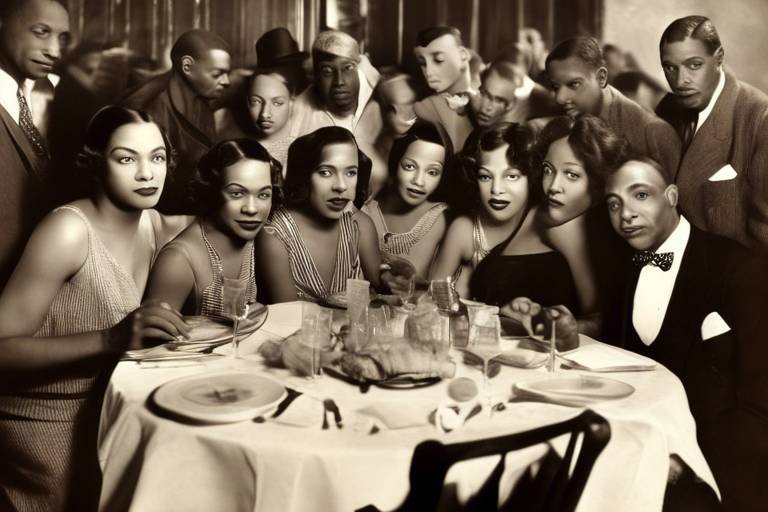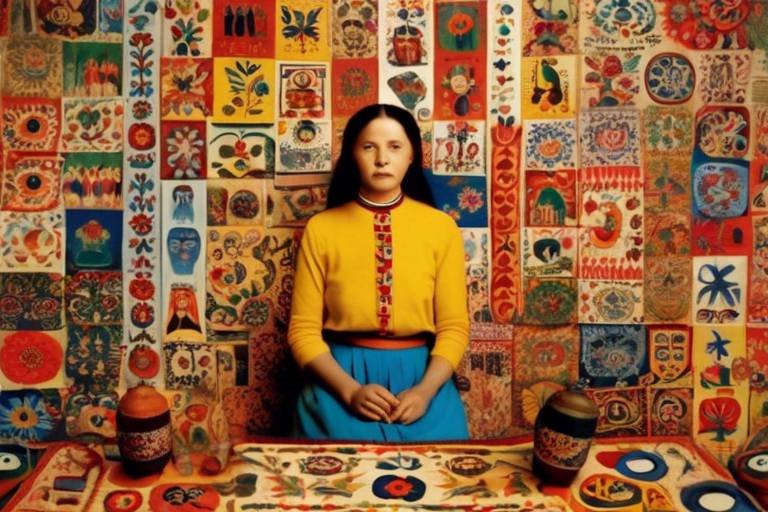The Role of Folktales in Shaping Cultural Identity
Folktales hold a significant role in shaping cultural identity by acting as a bridge between the past and the present, carrying the essence of traditions and values cherished by communities for generations. These timeless narratives serve as vessels of cultural heritage, preserving the collective memory of a society and passing down invaluable wisdom to future descendants.

Preservation of Tradition
Folktales play a crucial role in the preservation of tradition, acting as a vessel for passing down historical customs, beliefs, and practices from one generation to the next. These age-old narratives serve as a repository of cultural heritage, safeguarding the essence of a community's identity through the retelling of stories that have been cherished for centuries.

Transmission of Values
Folktales are not merely stories passed down through generations; they are vessels of wisdom, transmitting values and moral lessons that shape the beliefs and behaviors of individuals within a society. Through the art of storytelling, these narratives weave intricate tapestries of cultural norms and ethical principles, guiding listeners on a journey of self-discovery and reflection. Each character, each plot twist, and each resolution in a folktale is meticulously crafted to impart essential teachings that resonate with universal truths.
Imagine a young child sitting wide-eyed by the fire, listening intently to the words of an elder spinning a tale of bravery and sacrifice. In that moment, the child is not just entertained; they are absorbing the essence of courage, loyalty, and resilience. These values are not explicitly taught but subtly woven into the fabric of the narrative, leaving a lasting imprint on the listener's psyche.
Moreover, folktales serve as mirrors reflecting the societal norms and expectations of a particular culture. By portraying characters facing moral dilemmas and making choices based on ethical considerations, these stories provide a framework for understanding right from wrong, good from evil. They offer a moral compass that guides individuals in navigating the complexities of human relationships and societal interactions.
Furthermore, the transmission of values through folktales is not a one-way street. As listeners engage with these narratives, they are encouraged to reflect on their own beliefs and actions, sparking introspection and self-awareness. The characters in folktales often mirror aspects of human nature, highlighting both the virtues and flaws inherent in all individuals. Through identification with these characters, listeners are prompted to evaluate their own values and make conscious decisions about the kind of person they aspire to be.
In essence, the transmission of values through folktales is a profound and multifaceted process that goes beyond mere storytelling. It is a journey of self-discovery, a mirror reflecting societal norms, and a compass guiding individuals on the path of moral integrity. Through the timeless art of storytelling, folktales continue to shape cultural identities and foster a shared sense of values and ethics across generations.

Community Bonding
Folktales play a vital role in fostering a strong sense of community bonding by weaving together the shared experiences, values, and history of a group. These narratives create a common thread that connects individuals within a community, transcending differences and uniting them under a collective identity. Imagine folktales as a colorful tapestry, each story adding a new thread to the intricate design of community cohesion. Through the retelling of these tales, community members not only bond with each other but also with their ancestors who passed down these stories through generations.

Adaptation and Evolution
Exploring how folktales contribute to preserving cultural heritage and passing down values through generations.
Folktales have a remarkable ability to adapt and evolve over time, much like a chameleon changing its colors to blend into different environments. As societies progress and change, folktales undergo transformations while still holding onto their fundamental cultural essence. It's akin to a river that continuously flows, carving new paths but never losing its connection to its source.
Within the realm of folktales, adaptation is the key to survival. Just as living organisms evolve to thrive in changing environments, these stories undergo modifications to remain relevant to contemporary audiences. Imagine a timeless tale weaving its way through history, gathering new threads of narrative along the journey, yet maintaining the original thread that binds it to its cultural roots.
Moreover, the evolution of folktales reflects the dynamic nature of human experiences and beliefs. As societies encounter new challenges and opportunities, the narratives within folktales adapt to address these changing circumstances. It's like a painting that is constantly being retouched and reimagined, with each stroke adding depth and richness to the overall masterpiece.
Through adaptation and evolution, folktales continue to resonate with audiences across generations, bridging the gap between the past and the present. These stories serve as a living testament to the enduring spirit of a culture, showcasing its ability to embrace change while staying true to its roots.
1. How do folktales contribute to cultural identity?
2. What are some common themes found in folktales from different cultures?
3. How can modern technology be used to preserve and promote folktales?
4. Are there any contemporary authors who are revitalizing traditional folktales for a modern audience?

Symbolism and Representation
Folktales are more than just stories; they are vessels of symbolism and representation deeply ingrained in the cultural fabric of societies. These narratives often carry hidden meanings and messages that reflect the values, beliefs, and traditions of a community. Through intricate symbols and vivid representations, folktales offer a glimpse into the collective psyche of a culture, providing insights into its worldview and identity.
Symbolism in folktales can take various forms, ranging from animals and objects to colors and numbers, each carrying significant cultural connotations. For example, the portrayal of a wise old owl may symbolize wisdom and foresight in a story, while the color red could represent passion or danger. These symbols serve as metaphors that convey complex ideas in a simple and engaging manner, allowing listeners to interpret and internalize the underlying messages.
Furthermore, folktales often feature archetypal characters and motifs that represent universal themes and experiences shared by humanity. The hero's journey, a common motif in folklore, symbolizes growth, transformation, and overcoming challenges, resonating with audiences across different cultures. By delving into these symbols and representations, individuals can connect with the deeper meanings embedded in the stories, fostering a sense of cultural belonging and understanding.
Moreover, the cultural representations found in folktales offer valuable insights into the collective identity of a community. Through recurring themes, characters, and settings, these narratives reflect the values, norms, and historical experiences that shape a culture's worldview. By exploring the symbolic layers of folktales, one can unravel the intricate tapestry of a society's identity, gaining a deeper appreciation for its rich heritage and traditions.

Impact on Identity Formation
Exploring how folktales contribute to preserving cultural heritage and passing down values through generations.
The impact of folktales on identity formation within a cultural context is profound. These stories act as mirrors reflecting the values, beliefs, and traditions of a community, shaping the way individuals perceive themselves and their place in the world. Just like a sculptor molds clay into a beautiful sculpture, folktales mold the minds and identities of individuals, instilling a sense of belonging and cultural pride.

Global Influence
Folktales hold a remarkable power to transcend geographical boundaries and connect people from diverse cultures worldwide. These timeless narratives have the ability to resonate with individuals across continents, fostering a sense of shared humanity and understanding. Through the universal themes present in folktales, such as love, bravery, and justice, people from different backgrounds can find common ground and appreciate the richness of each other's heritage.
Moreover, the global influence of folktales extends beyond mere entertainment, serving as a bridge for cross-cultural communication and appreciation. As stories are shared and passed on, they create a tapestry of interconnectedness that highlights the similarities and differences among various societies. This exchange of narratives not only enriches cultural understanding but also promotes respect for diversity and encourages mutual learning.
Furthermore, the adaptability of folktales allows them to resonate with audiences worldwide, as they can be interpreted and reimagined in ways that speak to different cultural contexts. This flexibility ensures that the essence of the stories remains intact while adapting to the nuances and values of various communities. In this way, folktales continue to evolve and thrive, contributing to a global tapestry of shared stories and traditions.

Revitalization Efforts
Revitalization efforts in preserving folktales are crucial in maintaining cultural identity amidst the fast-paced changes of the modern world. Various initiatives are being undertaken globally to ensure that these traditional stories continue to thrive and resonate with contemporary audiences.
One common approach to revitalizing folktales is through digital platforms and online repositories. By digitizing these stories, they can reach a wider audience and be preserved for future generations. Online platforms provide accessibility and convenience, allowing individuals from different parts of the world to engage with these tales.
Furthermore, cultural institutions and organizations often organize storytelling events and workshops to promote folktales. These interactive sessions not only entertain but also educate participants about the rich cultural heritage embedded in these narratives. By bringing communities together through storytelling, a sense of unity and pride in cultural identity is fostered.
Collaborations between artists, writers, and scholars play a significant role in revitalizing folktales. Through creative reinterpretations and adaptations, these stories are kept relevant and appealing to contemporary audiences. By infusing new life into traditional tales, artists contribute to the preservation of cultural heritage while also sparking interest and curiosity among the younger generation.
Education systems are also incorporating folktales into curricula to ensure that these stories are passed down to future generations. By integrating folk narratives into formal education, schools play a vital role in transmitting cultural values and traditions. Students not only learn about their cultural roots but also develop a deeper appreciation for the diversity of human experiences.
Moreover, collaborations with indigenous communities and storytellers are essential in revitalizing folktales. By engaging with those who have inherited these stories through generations, a deeper understanding of the cultural significance and nuances of the tales can be gained. This partnership ensures that the authenticity and integrity of the folk narratives are preserved.
In conclusion, revitalization efforts in preserving folktales are essential in safeguarding cultural identity and heritage. By leveraging digital platforms, organizing storytelling events, fostering collaborations, integrating folk narratives into education, and engaging with indigenous communities, these traditional stories can continue to inspire, educate, and unite people across generations.
Frequently Asked Questions
- What is the significance of folktales in shaping cultural identity?
Folktales play a crucial role in preserving cultural heritage by passing down traditions, beliefs, and practices from one generation to another. They serve as a window into the history and values of a community, fostering a sense of continuity and connection with the past.
- How do folktales transmit values and morals?
Folktales convey moral lessons and societal norms through engaging narratives that resonate with listeners. By exploring themes of right and wrong, good and evil, folktales help instill ethical principles and shape behavior, guiding individuals towards virtuous actions.
- Can folktales contribute to community bonding?
Absolutely! Folktales have the power to bring people together by creating a shared cultural narrative. When community members gather to listen to or retell folk stories, they strengthen their sense of belonging and solidarity, fostering a collective identity rooted in common folklore.
- How do folktales evolve while maintaining cultural authenticity?
Over time, folktales undergo adaptations and variations to suit changing contexts and audiences. However, the core cultural elements and values embedded in these stories remain intact, ensuring that the essence of the cultural identity is preserved even as the narratives evolve.
- What global impact do folktales have on cultural understanding?
Folktales transcend geographical boundaries, serving as bridges between different cultures and fostering cross-cultural appreciation and empathy. By sharing universal themes and values, folk stories promote mutual respect and understanding among diverse communities worldwide.


















